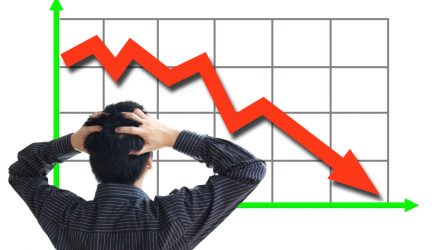The Covid-19 crisis didn’t do favors for the capital markets, but it did provide more baseline data for investors on how to deal with another black swan when it comes. One of the takeaways to derive from the pandemic is identifying which factors offer the best protection in a market downturn.
So, which group should ETF investors avoid?
“The factor with the greatest crash risk appears to be small-cap ETFs,” Derek Horstmeyer wrote in the Wall Street Journal. “Over the 11 months where the U.S. equity market tanked, the average small-cap ETF fell 9.77% in such a month. This is over 80% more crash risk than the equity ETF at the opposite end of this spectrum, the low-volatility ETF, which fell an average of only 5.35% in the months where the S&P 500 fell 5% or more. Using a 7.5% drop in the S&P 500, we see qualitatively identical results in the crash risk of these factors.”
Another group to watch carefully during a downturn is multifactor ETFs. That isn’t to say investors should avoid them altogether, but to but wary when markets turn awry.
“Also of interest is that multifactor ETFs (also called “smart beta”) and contrarian ETFs perform very poorly in down months, as well,” Horstmeyer wrote. “On average when the S&P 500 falls at least 5%, multifactor ETFs fall an average of 8.2% and contrarian ETFs fall an average of 9.43%. This latter result highlights that whoever is managing these contrarian ETFs isn’t doing a particularly good job of actually picking “contrarian” companies.”
“The results show that even though factor ETFs may be beneficial for the long-term value of your portfolio, they perform differently when the market plunges,” Horstmeyer added. “If you want to reposition your portfolio or just dabble back into stocks this spring, but still avoid the downside risk of another crash, it may be best to consider the quality and low-volatility ETFs and avoid those small-cap firms.”
Investors must feel like they’re walking around eggshells in the market, but one fund to consider is the Goldman Sachs JUST U.S. Large Cap Equity ETF (JUST). JUST seeks to provide investment results that closely correspond, before fees and expenses, to the performance of the JUST US Large Cap Diversified Index.
The fund seeks to achieve its investment objective by investing at least 80% of its assets in securities included in its underlying index, in depositary receipts representing securities included in its underlying index and in underlying stocks in respect of depositary receipts included in its underlying index. The index is designed to deliver exposure to equity securities of large-capitalization U.S. issuers that engage in “just business behavior” based on rankings produced by the index provider.
For more market trends, visit ETF Trends.








